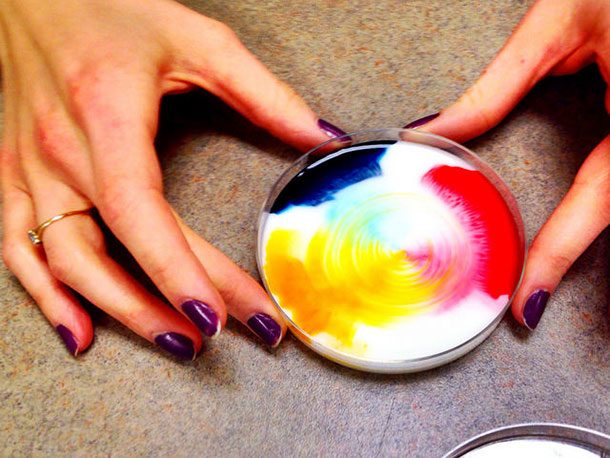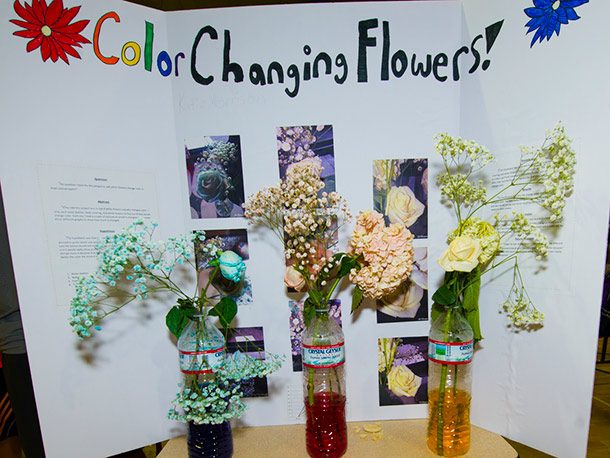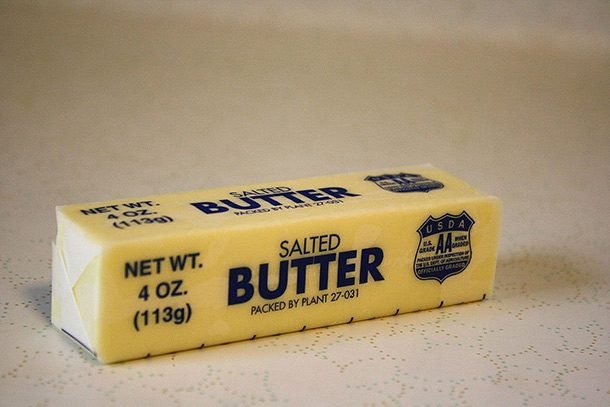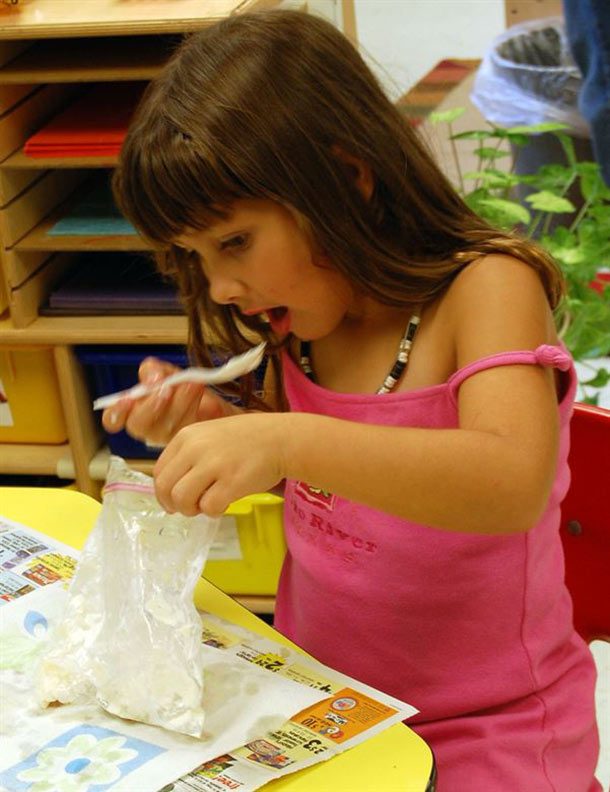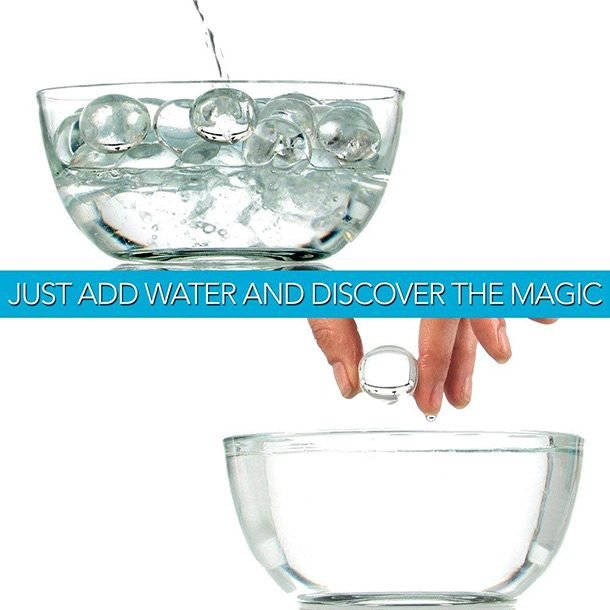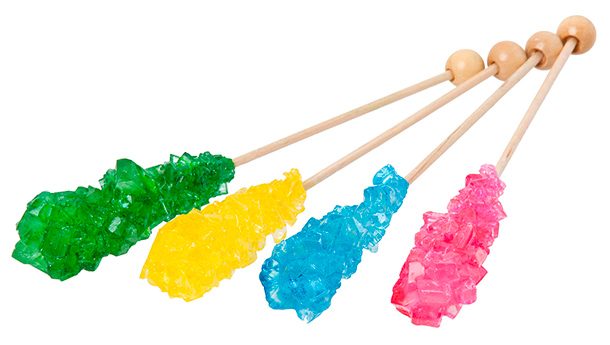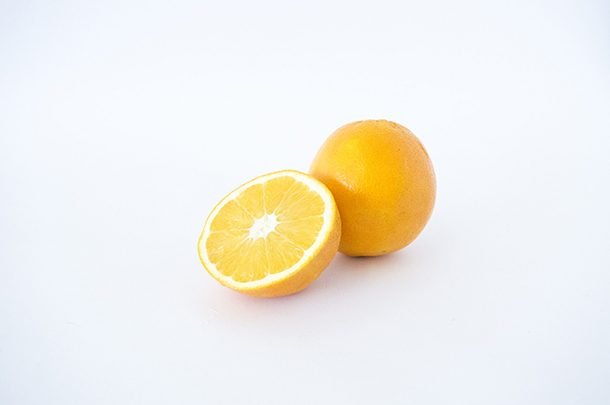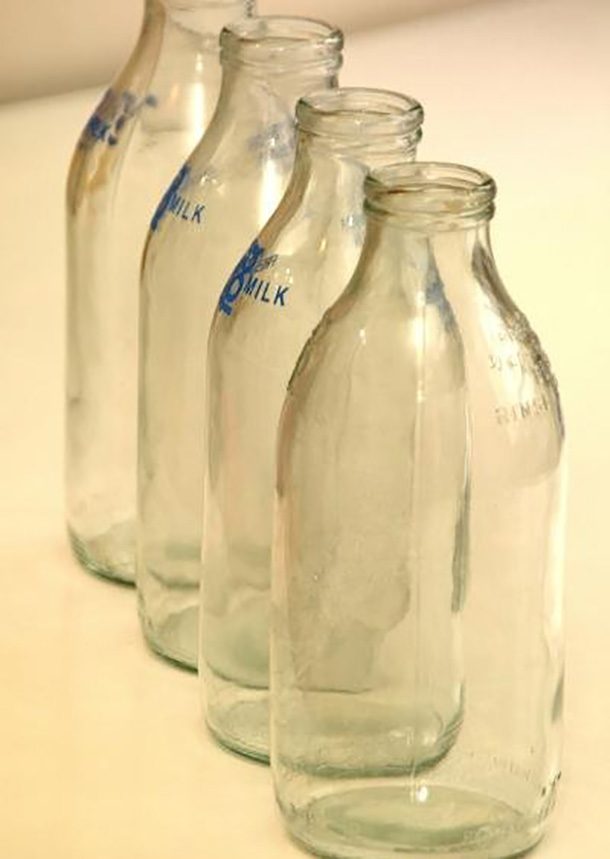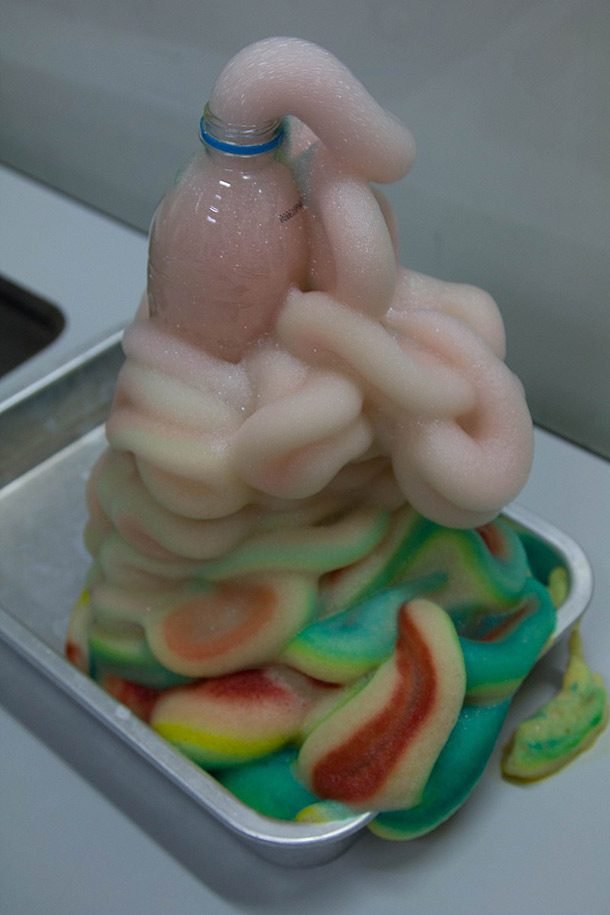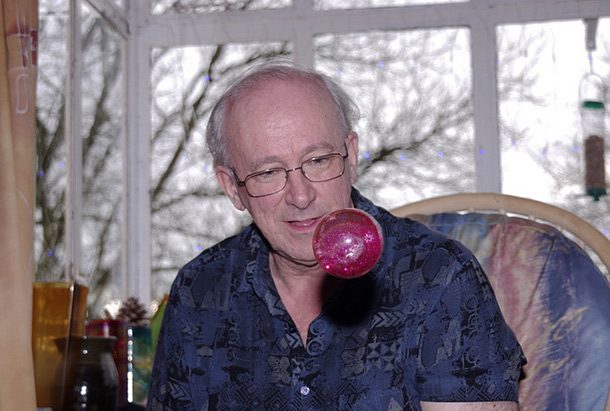It just creates a mess and wastes valuable laundry detergent in the process. Sure, it’s easy to teach and easy to make, but that’s about it. Thankfully, there are plenty of easy science experiments you can teach your kids with things around the house, and none require detergent to do it. Plus, I’m willing to bet these projects will be considered much cooler than slime. So, get your lab coat on, and get ready to learn about these 15 Science Projects Better Than Making Slime. Put the cream and marble inside, seal up the jar, and have your kids shake it for a long time. It could take up to 30 minutes. Once done, pour off the remaining buttermilk, remove the marble, and the butter should be on the bottom. All you have to do is add water to the Insta-snow product, and it’ll turn into snow. Better yet, there’s a guide that’ll be able to explain the science behind it that you can teach your kids. Larger salt crystals work much better for this experiment. Add the salt and ice to the gallon-sized bag and the remaining ingredients in the pint-sized bag. Add the pint-sized bag to the gallon-sized bag, seal it, and shake it for five minutes. By the end, you should have delicious ice cream. Then, wrap the opening of the balloon around the open soda bottle. When you’re ready, lift the balloon to drop the pop rocks inside. The balloon should inflate. Once you pour them into a bowl of water, it looks like they vanish. Take them out of water, they’ll dry out, and you can use them over and over again. Tie the string to the butter knife and place it over a glass jar with the string hanging inside without touching the sides. Boil the water, stir in the sugar, and if you want colored rock candy, put in a few drops of food coloring. Pour your sugary solution into the glass jar and perhaps cover it with a coffee filter so no particles get inside. Keep checking back each day to see if sugar crystals are growing. Squeeze lemon juice into a bowl, add a few drops of water and mix it with a spoon. Dip the cotton bud in the water just slightly and use it to write a message on the paper. Let it dry and then show your students the message under a lamp. Light the candle (with adult supervision, of course) and place the bottle upside down over the egg, but not enough to fully enclose it. Let the heat inside the bottle for a bit before allowing the egg to fully sit on top. The candle will likely go out but gradually the egg will slip right through. First, tie the tinsel together at both ends and cut off the remaining parts at each end with scissors. Rub the balloon on your hair for ten or more seconds until there’s a charge. Pick up the tinsel and place it close to the balloon. It should stick to the balloon but eventually start levitating above it. Using this kit, all you have to do is wipe an area with a sterile cotton swab, like the kitchen counter or a toilet, and then wipe that swab on the agar plate. Put the plate under a desk lamp to incubate and eventually you’ll start seeing the bacteria growing. You’ll need a clean 1 liter clear soda bottle, a funnel, 3/4 cup of water, vegetable oil, fizzing tablets like Alka Seltzer, and food coloring. First, pour water into the bottle, then using a funnel, slowly pour the oil in and wait til it separates. After that, put in a few drops of food coloring and then put in the fizzing tablet. To keep it going, you just need to put in another fizzing tablet.
